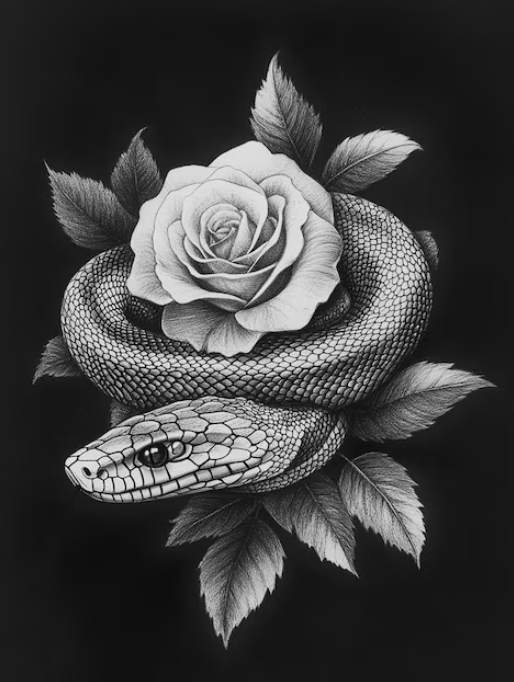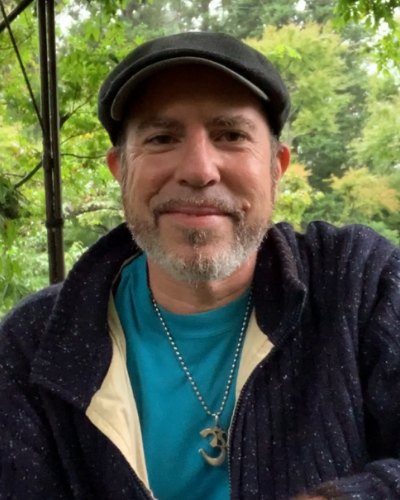Kundalini is a word that has traveled far from its origins—through time, through traditions, and through countless bodies and minds awakening to the vastness of their own inner worlds. Here, in this group, we hold space for the wide range of experiences that arise in its name.
In the classical texts of Tantra, Kundalini is the coiled serpent of awareness, Śakti herself, resting at the base of the spine, awaiting the moment of upward flight toward union with Śiva—pure consciousness. But the serpent isn’t just a symbol—it is one of the oldest metaphors known to human cultures. It speaks to the latent potential of life itself: primal, intelligent, cyclical, hidden until stirred. In the yogic view, the serpent coils three and a half times around the liṅga of Śiva at the base of the spine—representing dormancy, latency, and the sacred spiral of creation waiting to uncoil.
Why coiled? Because this life force, immense and unbounded, rests in perfect containment until the system is ripe to bear its unfolding. Like a seed encoded with the blueprint of an entire tree, Kundalini lies wrapped in stillness, potential curled inward, protective of its own power until the call to rise is heard from within. Her movement, when it begins, is not a straight line—it winds, spirals, pulses upward through the subtle body, advancing through knots of conditioned consciousness known as granthis. Each knot—whether psychological, karmic, or energetic—presents an invitation: to see more clearly, to feel more deeply, to surrender more wholly.
The journey of Kundalini is the story of consciousness waking up through the matter it animates. As she ascends, she dissolves illusions, purifies attachments, and reweaves the nervous system to hold greater currents of truth. And when she reaches the crown—when Śakti unites in holy matrimony with Śiva, the silent witness, the unmoving source—it is not a marriage of opposites, but of long-separated lovers. The dynamic force of nature recognizes itself in stillness; the movement of life returns to its origin. This is not metaphor alone. This is the architecture of awakening described by mystics and yogis across ages: the realization that what we seek has always been our own innermost being.

Fast forward to the 20th century, and we find the term appropriated and adapted—perhaps most famously in the system popularized by Harbhajan Singh Khalsa, widely known as Yogi Bhajan. His version, branded Kundalini Yoga, blended Sikh devotional elements with modern psychological and physical practices. While many have found benefit in his teachings, scholars and former practitioners have raised critical questions. For those interested, Philip Deslippe’s excellent academic paper, “From Maharaj to Mahan Tantric: The Construction of Yogi Bhajan’s Kundalini Yoga” offers a well-researched and balanced deconstruction of this movement’s origins and claims.
In contemporary spiritual discourse, Kundalini is often spoken of less as a doctrine and more as a phenomenon—sometimes described as a sudden energetic uprising, a psycho-spiritual crisis, or a long-term awakening process. For some, it brings bliss, visions, and insight. For others, it reveals trauma, anxiety, and a destabilization that feels anything but spiritual. Psychology has entered the conversation here, framing Kundalini awakenings within models of trauma release, nervous system regulation, and somatic integration. The line between pathology and transformation is, in many cases, a matter of how we listen—and how well we’re supported.
And so, we find ourselves here. Each of us with a story. A yearning. A question. An experience that doesn’t quite fit into any one paradigm.
Because Kundalini is not just energy. It is awareness itself. Cit-śakti—the knowing force that animates all things. It is the very unfolding of consciousness, the dance of life discovering itself through the body, through breath, through challenge, and through grace. Yes, it can be destabilizing—what true awakening is not? But it also holds within it the intelligence of healing, the impulse of integration, and the deepest love of truth.
In this space, we honor every view, every framework—be it Tantric, yogic, psychological, mystical, or scientific. And we also hold lightly to all of them, knowing that the journey is not toward the reinforcement of a belief, but toward that which cannot be named: the stillness beyond all stories, the silence out of which every view arises and to which all return.
You are welcome here. Whether you are in bliss or in breakdown, whether you call it Kundalini, healing, trauma, or awakening—this is a place to share, to inquire, to listen, and to be met.
Together, we explore—not to find the right answer, but to recognize the freedom that comes when we no longer need one.

…is a Saiva Tantrika, Gyana Yogi and founder of Uma Maheshwara Yoga & Ayurveda. David has an MA in Semiotics, lives in Japan with his family and works as a coach in L & D, devoting his time to developing science-based tools and programs that help people reach the fullest potential of the human condition.
Discover more from REAL YOGA
Subscribe to get the latest posts sent to your email.

